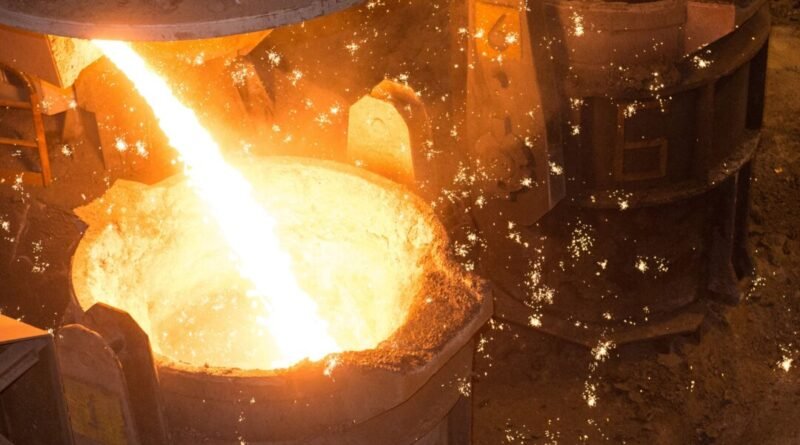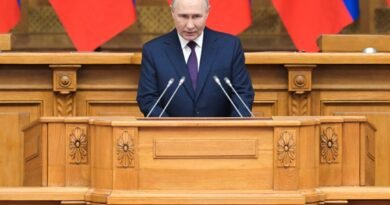Former ACCC Chair Believes Australia has Potential to Lead in Green Metals Manufacturing
‘The world needs Australia to make many green products because we have massively more low-cost renewable energy resources than we need,’ said Rod Sims.
Former Australian Competition and Consumer Commission (ACCC) chair Rod Sims has emphasized that metals manufactured without the use of fossil fuels could revolutionize Australia’s export industry in the global push for net zero emissions.
Sims believed that producing “green metals” (metals created using renewable energy and hydrogen) could significantly increase Australia’s export revenue while substantially decreasing greenhouse gas emissions.
Speaking at the Committee for Economic Development of Australia’s (CEDA) second annual Climate and Energy Forum on May 8, Sims shared his insights with energy experts from various sectors, including mining, energy corporations, and the Australian Energy Market Operator.
He pointed out that Australia is likely the most cost-effective location globally to produce green iron due to its optimal combination of solar and wind energy resources and vast biomass sources for zero-emissions chemical manufacturing.
“Countries like Japan, Korea, China, and most of Europe do not possess adequate moderately priced renewable energy resources to meet their domestic electricity demands.”
“They will need to either import renewable energy, ammonia as a derivative of hydrogen, and/or use nuclear energy–all at great cost–simply to meet their domestic electricity needs.”
Moreover, Sims noted that advanced economies would be required to import goods with high “green” energy intensity if they wish to achieve their climate targets in the near future.
Despite Australia currently contributing just 1 percent of global emissions, Sims suggested that by manufacturing “green” iron, aluminium, transport fuels, urea, and silicon in Australia, the country could help reduce global emissions by 6-9 percent.
“By transforming our iron ore into green metal alone, Australia could decrease world emissions by over 3 percent–nearly tripling the impact of decarbonizing Australia on global emission reduction,” he added.
“Australia covers about 5 percent of the earth’s land surface. Supplying about 7-10 percent of the world’s renewable energy is no stretch given our abundant solar, wind, and land resources.”
In addition to curbing global emissions, Sims estimated that if Australia ventured into producing green products, it could generate an extra $250-$300 billion (US$165-197 billion) in export revenue annually.
These figures surpass the revenue of $120-220 billion per year from coal and gas exports, Sims noted.
Meanwhile, Larry Marshall, chairman of the Fortescue innovation committee, shared that Australia could export materials to other nations without needing full manufacturing capabilities to harness its renewable energy potential.
“I don’t foresee us producing green steel in this country … but I do agree with Rod that we’ll manufacture green iron,” Marshall commented.
“Australia can significantly increase the value of iron ore by converting it into green iron or a precursor that can be shipped to China.”
Fossil Fuel Tax Recommendation
In addition to the push for green metals manufacturing, Sims proposed that the government introduce a Carbon Solutions Levy (CSL) to fund policies and investments aimed at transitioning the country into an energy-intensive green manufacturing hub.
He suggested that the tax should be imposed on all fossil fuel extraction sites in Australia (about 105 sites) and on all fossil fuel imports into the country.
Sims highlighted the necessity of this tax to level the playing field between green products and those produced with fossil fuels.
“Green products are more expensive than products made with fossil fuels because the latter do not bear the costs of the damage they cause,” he explained.
“I understand that increasing taxes is challenging in Australia… but as Australia realizes the inevitability of transition, taxing fossil fuels is the most effective approach.”
The former ACCC boss also urged the upcoming federal budget in May to address obstacles hindering the launch of renewable energy projects and establish clear qualification criteria for individual projects.
“There is no logical reason why Australian project approvals take as long as they do. We need proactive policies, not reluctant regulations,” Sims emphasized.

Sharp Increase in Energy Demand for Green Metal Production
While Sims’ proposition to transform Australia into a green metal manufacturing hub could drive revenue growth for the country, there is a pressing need for a substantial expansion in Australia’s electricity generation capacity to meet the energy demands.
This amount is equivalent to doubling the country’s current total electricity generation.
Furthermore, if Australia aims to create new markets for green iron and hydrogen exports, the demand for additional electricity would soar to 1,450 terawatt-hours per year.
Meanwhile, some energy experts have raised concerns about energy production in Australia.
He cautioned that the national power grid could face risks and called for an agreement between governments and energy companies to regulate the closure of fossil fuel generators to prevent shortages in generation capacity.





